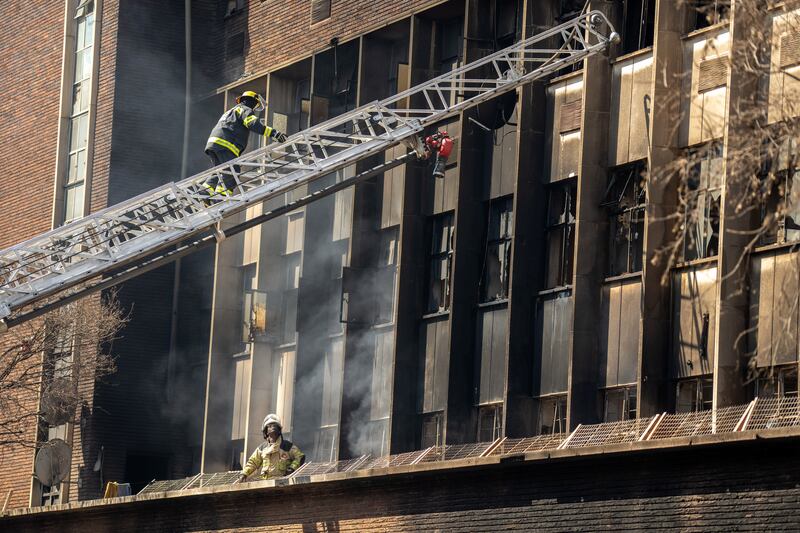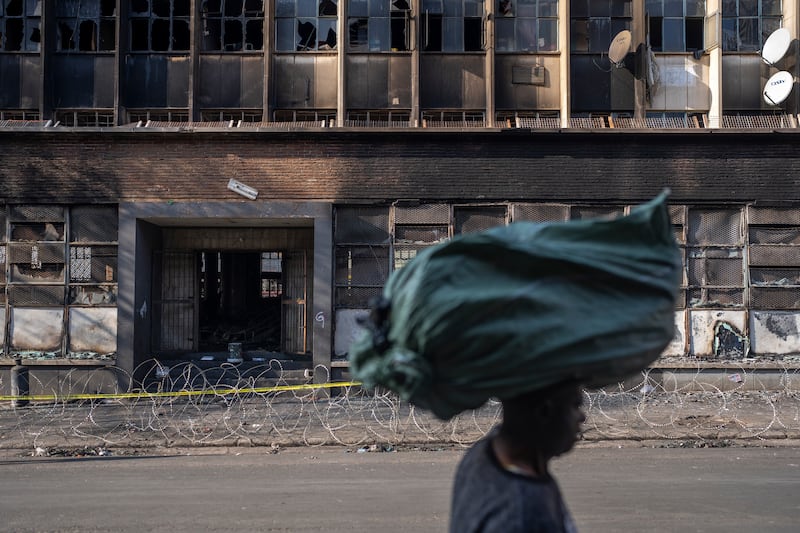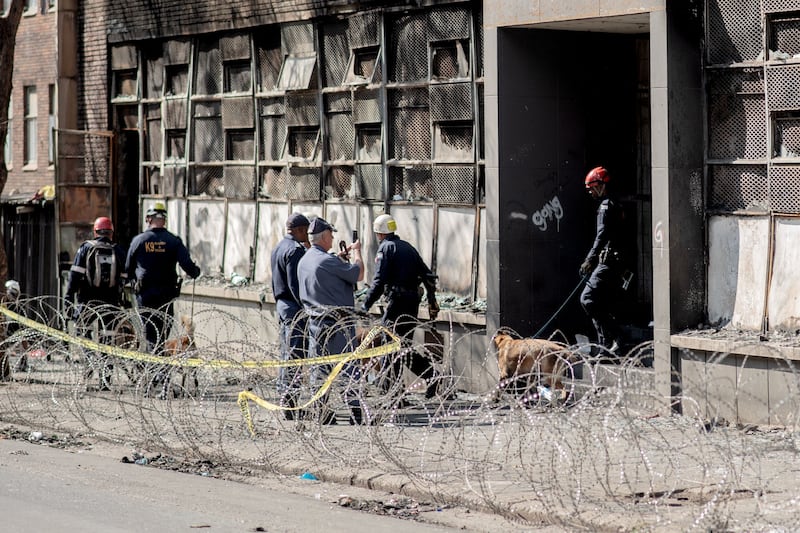Police with sniffer dogs searched through the gutted remains of a Johannesburg apartment block on Friday, as authorities stepped up investigations into the cause of a fire that killed more than 70 people.
Officers used razor wire to cordon off areas around the run-down five-storey building that was destroyed in a blaze in the early hours of Thursday in one of South Africa’s worst such disasters in living memory.
Addressing journalists while visiting the injured at Menlo hospital, health minister Joe Phaahla said the death toll had risen to 76.
Most of the bodies were burned beyond recognition and investigators would have to rely on DNA samples from relatives to identify them, Thembalethu Mpahlaza, from Gauteng province’s Forensic Pathology Services, said.
Nord Stream saga shows German leaders’ magical thinking and economical approach to the truth
‘This is the end game’: India corners Maoist rebels after decades-long struggle
Trump’s slapdown diplomacy reduces Oval Office meetings to spectator sport
UK-Israel relations plunge as calls grow in Britain to recognise Palestine
Only 12 bodies so far recovered were identifiable by sight, he added.
[ Why the Johannesburg apartment building was a firetrapOpens in new window ]
“I am devastated,” block resident Wambali Kaunda, who lost his brother and niece in the fire, told Reuters.
“We have been told that if you are able to identify your family members, then you will be able to collect the bodies.” He said he was on the first floor not far from the exit when the fire broke out, so managed to escape.

Many of the residents were immigrants and foreign workers. Malawi’s foreign ministry said more than 20 of its citizens died in the blaze.
On one side of the building, three twisted bed sheets that people had dangled from windows to help them escape flapped in the wind. Below lay a mattress that someone had dropped to try to break their fall.
[ Johannesburg fire: survivor claims some fire escapes were lockedOpens in new window ]
Thabiso Phafudi stared up at a blackened wall and shook his head, while his mother, Matsupa, broke down in tears.
“My mother’s sister died in there,” Thabiso said. “The building was unsafe… I just never thought it could catch fire.”

While household fires are common in Johannesburg, especially in poor areas, the incident has highlighted a housing crisis in one of the world’s most unequal cities with widespread poverty and joblessness.
Authorities were urging those displaced by the fire to leave, and overnight had provided buses to take them to a homeless shelter, but many chose to stay, hoping to save what was left of their belongings.
[ Illegal mining blamed as Johannesburg gas leak kills 17Opens in new window ]
“Last night some people didn’t want to get on the buses. They know people can sneak in and steal their clothes,” said former resident Leo (25), who escaped with his mother down the stairs when the fire started.
He said they would move to a shelter, adding: “My mother can’t sleep on the street.”

The apartment block is owned by municipal authorities, but officials have struggled to provide a clear picture of who lived there, saying the block had been “invaded and hijacked” by unknown groups.
A provincial official said on Thursday some of those who died may have been renting from, or were being extorted by, criminal gangs in the so-called “hijacked buildings” syndicates.
President Cyril Ramaphosa said on Thursday the fire was a “great tragedy” and a wake-up call for South Africa to tackle its inner-city housing crisis. – Reuters












